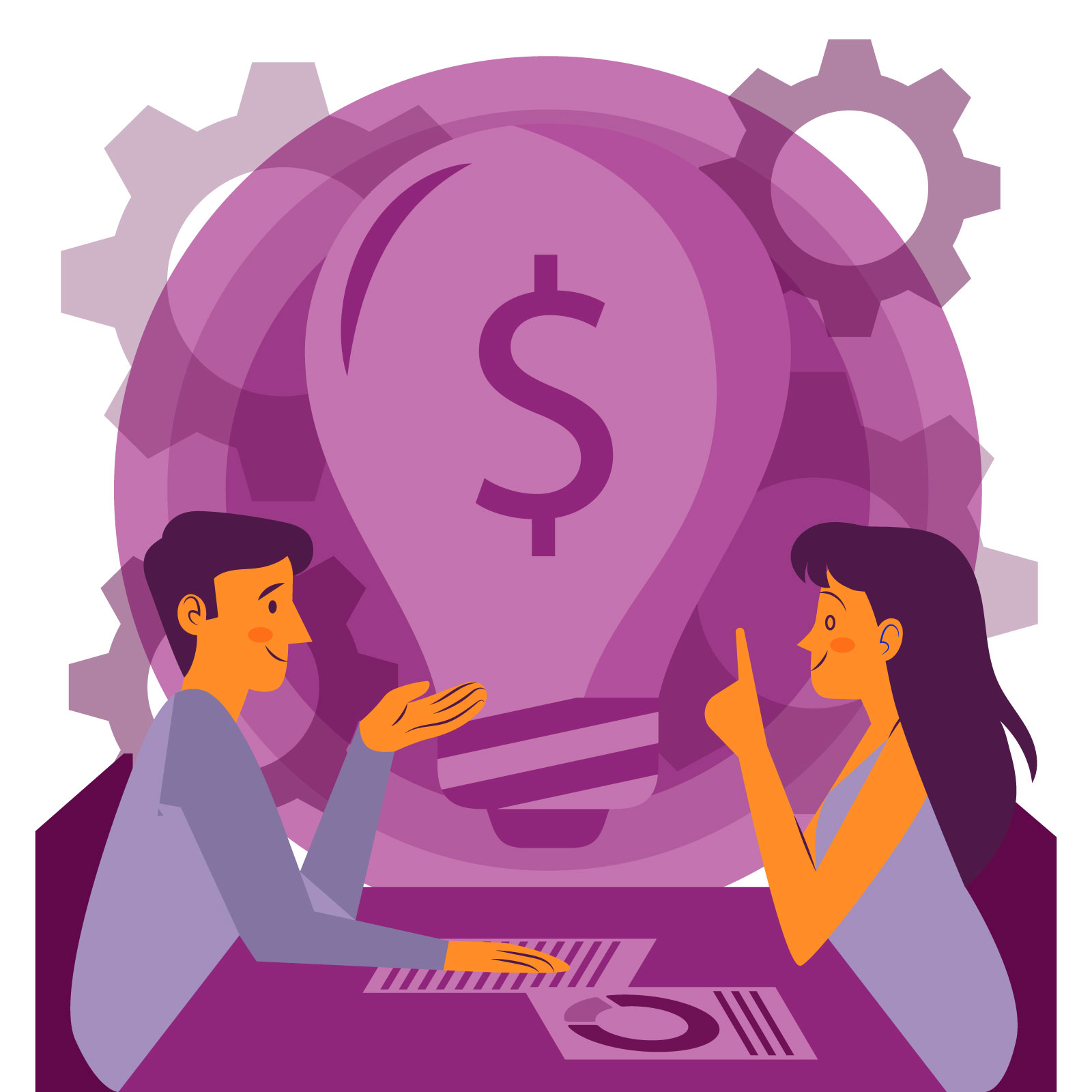Ready to turn those clicks into paying customers?
PPC landing pages are your secret weapon! Imagine an ad so targeted it takes users directly to a laser-focused page designed to fulfil their exact need. These focused pages work with ads (like those on Google or Meta or Amazon) to grab people’s attention and quickly turn them into customers.
Want to attract your target audience to get a purchase, a signup, or a download? Here’s all you need to know, right from the basics to best practices, so you can create PPC landing pages that get results.
What is a PPC Landing Page?
PPC landing pages are focused web pages created specifically for your PPC ad campaigns. Unlike your website’s homepage, these targeted pages have one goal: converting visitors who clicked your ad into leads or customers.
When someone clicks your ad, they land on this dedicated page, ensuring a clear and relevant continuation of the message you presented in the ad. This minimises distractions and keeps them engaged in your offer.
By tailoring the landing page content to your ad and targeting the right audience, you maximise the ROI for your PPC campaigns.
Top 8 Benefits of Targeted PPC Landing Pages
- Seamless User Journey: Align your landing page content with your ad’s message to create a smooth continuation for visitors. Keep your customers engaged and focused on your offer.
- Boosted Conversions: Clear and compelling CTAs, like ‘Buy Now’ buttons or sign-up forms, guide visitors towards conversions, and help maximise your campaign’s ROI.
- Laser-Focused Attention: Landing pages eliminate distractions like extra navigation or unrelated content. This keeps visitors’ focus squarely on completing the desired action.
- Consistent Brand Experience: Consistent visuals and messaging between your ad and landing page create a strong brand connection and holistic impact to reinforce trust and credibility.
- Fast Loading and Mobile-Friendly: Today’s users expect quick load times and responsive design. Optimised landing pages ensure a smooth user experience across all devices, preventing bounce rates due to slow loading.
- A/B Testing Powerhouse: The beauty of landing pages lies in their customisability. A/B test different headlines, CTAs, and other elements to identify the most effective combinations for optimal conversions.
- Improved User Experience: Seamless continuation from ad to landing page keeps visitors engaged and focused on converting.
- Enhanced Campaign Performance: Google Ads rewards relevant landing pages with a higher Quality Score, potentially leading to lower costs and increased conversions.
Top Differences between a PPC Landing Page and a Web Page
- Webpage: A web page is part of your website’s ecosystem, offering information about your company, services, or products. It caters to a broad audience with diverse needs and interests.
- PPC Landing Page: Sharply focused on a specific conversion goal, a PPC landing page is designed for visitors who clicked on a relevant ad. It streamlines the user journey by presenting a clear CTA, such as a ‘Buy Now’ button or a sign-up form.
Top Differences between a PPC Landing Page and any other Landing Page
- Landing Page: A general landing page can be used for a number of marketing purposes, such as capturing leads, promoting a new product, or offering a free download. It has something for everyone, no matter who lands there.
- PPC Landing Page: Laser-focused on a specific conversion tied to a PPC ad, a PPC landing page personalises the visitor’s experience. It reinforces the ad's message and offers a clear CTA (e.g., ‘Buy Now’ for a purchase ad, ‘Sign Up for Free Trial’ for a service ad).
Unlocking Higher Conversions with Targeted PPC Landing Pages
While crafting compelling PPC ads is crucial, the real magic happens when visitors click through. Here’s where PPC landing pages come in – powerful tools to skyrocket your conversion rates and maximise your advertising budget.
The Problem: Sending Traffic to the Wrong Place
Many businesses send paid traffic to generic pages like their homepage. This creates a confusing experience for visitors searching for something specific. Imagine clicking an ad for a discount on running shoes, only to land on a general clothing website. Frustrating, right? This mismatch between ad promise and landing page reality leads to high bounce rates (visitors leaving quickly) and wasted ad spend.
The Solution: Tailored Landing Pages for Targeted Conversions
The answer lies in crafting specialised PPC landing pages. These focused web pages are designed with a single conversion goal in mind – be it a purchase, download, or sign-up – directly aligning with your PPC ad message.
Crafting Conversion: Actionable Tips for PPC Landing Page Optimisation
Here are the three key ingredients that power conversions:
Visual Appeal:
- Hero Shot: Grab attention instantly with a powerful hero image at the top of your landing page. This image should be visually compelling and directly related to your offer.
- High-Quality Images: Don’t stop at the hero shot. Use high-quality, relevant images throughout your landing page to visually reinforce your message and create a cohesive experience.
Headline & Subheading:
- Headline: Craft a clear and concise headline that echoes your ad message and instantly captures the visitor’s attention.
- Subheading: Expand on your headline with a subheading that offers additional details and benefits of your offer.
Call to Action:
- One Goal, One Action: Eliminate confusion by featuring a single CTA on your landing page. This could be a button or form that clearly directs visitors towards the desired action, whether it’s ‘Buy Now’, ‘Download Now’, or ‘Sign Up for Free.’
6 Landing Page Optimisation Hacks for Marketers
Landing pages are conversion powerhouses. Studies show brands with 10-15% more landing pages see a staggering 55% increase in leads. But creating high-converting landing pages can be tricky.
Now that you’ve got the foundation set, here are six powerful methods to optimise your landing pages and maximise your return on PPC investment.
1. Leverage Social Proof for Trust and Conversions
What is social proof? It’s harnessing the power of customer validation to build trust and drive conversions. Think positive reviews, ratings, and user-generated content displayed prominently on your landing page. Our experience shows a 17% average conversion rate increase for clients who implemented social proof.
Here’s how to integrate social proof:
- Customer Reviews & Ratings: Showcase reviews from platforms like TrustPilot to build trust and social validation.
- User-Generated Content: Feature photos, videos, or quotes from satisfied customers to showcase the real-world impact of your product or service.
- Case Studies: Demonstrate your expertise with detailed case studies highlighting successful client projects.
2. Prioritise Speed: A Fast-Loading Landing Page is a Converting Landing Page
A slow-loading landing page is a conversion killer, especially on mobile (which accounts for 87% longer loading times than desktop).
Here’s the harsh reality:
- 47% of consumers expect websites to load in 2 seconds or less.
- 40% abandon pages taking 3+ seconds to load.
How to Speed Up Your Landing Page:
- Minimise Code: Remove unnecessary Javascript or unused code to streamline page load times.
- Optimise Images: Reduce image file sizes without sacrificing quality.
- Consider Your Hosting: Upgrade your web hosting plan or provider to improve loading speeds.
3. Craft Targeted Landing Pages for Specific Audiences
PPC campaigns rely heavily on keyword research. Take it a step further by creating dedicated landing pages for specific audiences using relevant keywords.
For example, a clothing brand like Levi’s might have a general landing page for all clothing alongside specific pages for ‘Women’s Jeans’ and ‘Men’s Jeans.’
Benefits of Targeted Landing Pages:
- Enhanced User Experience: Content directly caters to user intent, leading to a more satisfying experience.
- Improved Quality Score: Google rewards relevant content, potentially lowering your cost-per-click.
- Higher Conversion Rates: Users find exactly what they’re looking for, increasing the likelihood of conversion.
Remember: As your audience evolves, so should your landing pages. Regularly update content and structure to maintain optimal relevance.
4. Optimise Landing Page Text for Clarity and Engagement
While SEO best practices aren’t the main focus for PPC landing pages, some key principles still apply:
- Concise Headlines: Keep headlines under 60 characters and ideally 30 characters for PPC.
- Keyword Research: Understand user intent by researching relevant keywords throughout the marketing funnel.
- Structure & Readability: Utilise title tags, H1s, and H2s to break down text for easy comprehension.
5. Ditch the Navigation Bar for PPC Landing Pages
For PPC landing pages, navigation bars can be a distraction, potentially leading users away from the desired conversion point.
Here’s why you might want to skip the navigation:
- Focused Conversion: A clean, navigation-free design keeps the user’s attention on your call to action.
- Paid Traffic, Targeted Action: You’ve already paid to get users to this specific page; don’t risk them navigating elsewhere.
6. Embrace Continuous Testing and Refinement
The key to landing page mastery lies in a test-and-learn approach. Experiment with different elements like device compatibility, operating systems, and browsers. Analyse the data to gain valuable insights and continuously optimise your landing pages for peak user experience and conversions.
The Power of Conversion Rate Optimisation
CRO is a proven technique to maximise your return on PPC investment. But it goes beyond just conversions. Here’s how a great landing page experience impacts your campaigns:
- Quality Score Boost: A positive user experience can improve your quality score, lowering your CPC and boosting ROI.
- Data-Driven Optimisation: CRO allows you to identify areas for improvement on your landing pages, leading to more conversions.
Need a fresh perspective? Let’s talk.
At 360 OM, we specialise in helping businesses take their marketing efforts to the next level. Our team stays on top of industry trends, uses data-informed decisions to maximise your ROI, and provides full transparency through comprehensive reports.












.png)




